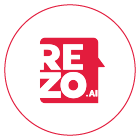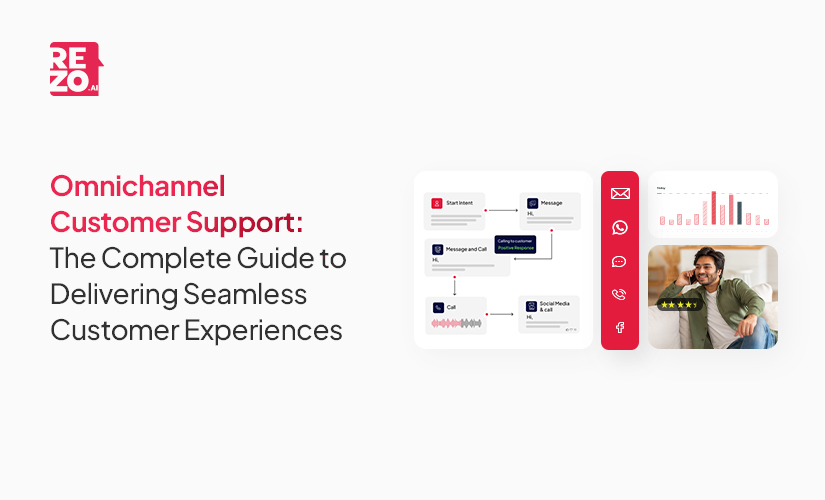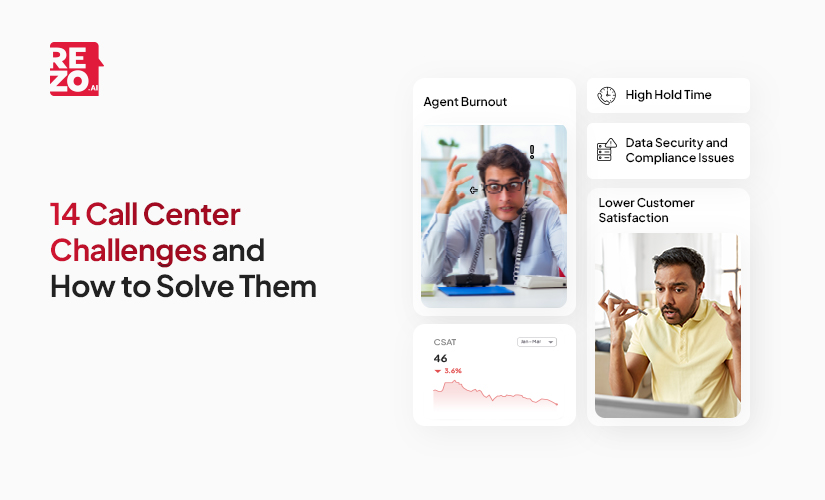
Types of Chatbots: Find the Best Virtual Assistant for your Business

Types of Chatbots: Find the Best Virtual Assistant for your Business


Chatbots are the future of all virtual interactions. They have grown in popularity as a way of communication between businesses and their customers. Chatbots have the capacity to engage a wider audience and handle increased interactions effectively.
Enterprises are continuously trying to improve their customer experiences, streamline customer service operations and increase efficiency. Chatbots fit right into these goals as they offer 24x7 support with limited human interference and cost savings.
Decision makers must understand the different types of chatbots to make informed investment decisions for AI-driven automation. From rule based chatbots that handle simple queries to AI-powered chatbots that are capable of complex customer interactions, the spectrum types of chatbots is vast.
Chatbots differ according to their applications and strengths. This is what we will discuss and explore in depth in this article.
What is a Chatbot?
A chatbot is a rule based (may or may not be Artificial Intelligence-driven) conversational application designed to simulate human-like conversations through text or voice. Utilizing artificial intelligence (AI) and natural language processing (NLP), chatbots can understand and respond to user queries, providing a personalized and interactive experience.

Some chatbots use text-to-speech functions to convert text-based responses into spoken audio, enhancing user interaction by allowing them to receive answers audibly without manual input. Customer support chatbots can understand the queries from a customer and respond to them on their own as per the defined knowledge that they possess. These versatile tools can be seamlessly integrated into various platforms, including websites, mobile apps, and social media channels.
Chatbots are mainly used in customer support conversations to automate and burden off regular customer queries from human customer service agents.
Importance of Chatbots in Business
Chatbots offer a multitude of benefits and have emerged as a key asset for businesses.
- Improved Customer Service: Chatbots provide 24x7 support and efficiently answer frequently asked questions, assisting customers with their queries. Customers get answers quickly and at the time of their convenience.
- Increased Efficiency: By automating routine tasks, chatbots free up human staff to focus on more complex and high-value activities. For example, menu based chatbots can take up almost all the frequently asked queries.
- Enhanced User Experience: Chatbots offer a personalized and interactive customer service experience. In addition to being available all the time, chatbots can also raise tickets on customer's behalf, making it a lot easier for customers.
- Cost Savings: Customer support chatbots reduce the need for extensive human agents and can thus contribute to significant cost savings for businesses.
These advantages make chatbots a powerful tool in enhancing business operations and customer satisfaction.
What are the Different Types of Chatbots?
A lot of different types of chatbots exist today, each specialized for doing specific tasks. Broadly these types of chatbots can be categorized based on their functionality and communication style. Each type of chatbot serves a different purpose, offering unique advantages and limitations.
Types of Chatbots Based on Functionality

Rule-Based Chatbots (Decision Tree Chatbots)
These chatbots follow predefined scripts and workflows and respond based on a set of programmed rules. They work well with pre-defined and structured queries like FAQs but struggle with complex interactions. Menu based chatbots or button based chatbots are an example of this kind of chatbots.
Advantages:
- Reliable and predictable responses.
- Easy to develop and deploy.
- Cost-effective for simple automation.
Limitations:
- Cannot handle unstructured queries or learn from interactions.
- Limited flexibility in conversation.
Use Cases
- Website FAQs & Customer Support: Businesses often integrate such chatbots on websites to provide instant answers to common questions, such as refund policies, store locations, and delivery tracking. For example, an e-commerce website chatbot answering “What is your return policy?” with a predefined response.
- Appointment Booking in Healthcare: Hospitals and clinics use rule-based bots to let patients schedule appointments, check availability, and receive reminders. For example, a clinic’s chatbot allows users to select a doctor and book a slot without human intervention.
- Order Tracking in E-commerce: Customers can quickly check the status of their orders by inputting order IDs into the chatbot. For example, a chatbot for an online retailer provides real-time updates: “Your package is out for delivery."
- Handling Price Inquiries in Online Retail: This kind of chatbots can efficiently respond to customer inquiries about prices and discounts. For instance, an online retail chatbot can provide information on product costs, available discounts, and special offers, helping customers make informed purchasing decisions.
AI-Powered Chatbots (Conversational AI Chatbots)
These chatbots leverage Natural Language Processing (NLP), Natural Language Understanding (NLU) and Machine Learning (ML) to understand the intent of the query, the context which the provided input falls under and uses this information to provide dynamic responses. These chatbots are leverage conversational AI and are thus their responses are more human-like.
Advantages:
- Can engage in natural, human-like conversations.
- Continuously improve through learning.
- Handle complex queries and multi-turn conversations.
Limitations:
- Higher development cost and implementation time.
- Requires data training and regular updates.
Use Cases
- AI-Driven Customer Service in Banking & Telecom: AI chatbots understand customer intent and offer personalized responses for banking queries, account details, or telecom plan upgrades. For example, a banking chatbot handles queries like "What’s my account balance?" by integrating with backend systems.
- Virtual Assistants for Enterprises: AI chatbots act as virtual assistants, helping employees schedule meetings, send emails, or retrieve documents. For example, an AI bot in Slack integrates with calendars and reminds users of upcoming meetings.
- Smart Sales Bots for Lead Qualification: AI chatbots interact with potential customers, analyze responses, and determine whether a lead is sales-ready before handing it off to a sales rep. For example, a chatbot on a SaaS website asks, “What challenges are you facing?” and categorizes leads based on responses.
Hybrid Chatbots
These combine rule-based logic with AI-powered capabilities, offering structured workflows while allowing for AI-driven responses when needed. Hybrid chatbots can act as conversational partners, adapting to user interactions and providing personalized support.
Advantages:
- Balances automation with intelligent interactions.
- Can escalate complex queries to human agents.
- Cost-effective compared to fully AI-driven chatbots.
Limitations:
- Still requires manual setup of rules and training data.
- Might not fully adapt to unpredictable queries.
Use Cases
- Customer Support Escalation: A hybrid chatbot starts with rule-based responses but switches to AI when customer queries becomes complex. If AI still can’t resolve the issue, it escalates to a human agent. For example, a chatbot for a telecom provider can answer “How do I pay my bill?” using predefined answers but switches to AI when asked, “Why was my bill higher this month?”
- E-Commerce Product Recommendations: Hybrid bots suggest products based on customer preferences, allowing personalized shopping experiences. For example, a bot in a fashion store asks users, “Do you prefer casual or formal wear?” and then provides tailored suggestions.
- HR Bots for Leave Management: Employees can check leave balances and apply for time off via chatbots integrated into internal HR systems. For example, a chatbot in Microsoft Teams lets employees ask, “How many leave days do I have left?” and provides an instant response.
Difference between Rule based chatbot and AI chatbot
Rule Based Chatbot- A rule-based chatbot adheres to human-written scripts and pre-established rules. It struggles with anything that deviates from these guidelines and can only react in certain ways to certain inquiries. A decision tree might be used to compare it: if you say "X," it will respond with "Y."
AI Chatbot- Like chatbots driven by machine learning, AI chatbots gain knowledge from a tremendous amount of data. With increased involvement, it can comprehend a wider variety of inquiries, offer more adaptable answers, and get better over time. AI chatbots are more versatile and helpful for a variety of jobs since they can manage complex discussions better than rule-based ones.
.jpg)
How are AI Chatbots Different and Simulate Human Conversation?
AI chatbots stand apart from traditional chatbots due to their natural language processing capabilities, context comprehension, adaptability, and learning. They engage in complex, open-ended discussions, support multiple languages, and offer personalized experiences. Unlike rule-based counterparts, different types of AI chatbots generate responses dynamically, improve through interaction, and mimic human conversational nuances. This advancement signifies a shift from rigid scripted interactions to more human-like, intelligent, and versatile communication tools.
Types of Chatbots Based on Communication Style

Text-Based Chatbots
These chatbots interact with users through text-based interfaces on websites, messaging apps, and customer portals. The input and output in this type of chatbot is a text string.
Advantages:
- Easy to integrate into existing digital channels.
- Cost-effective and simple to develop.
- Works well for FAQs, lead generation, and support.
Limitations:
- Lacks emotional engagement compared to voice interactions.
- Can be slow for users who prefer speaking over typing.
Use Cases:
- Customer Inquiry Handling on Websites: Businesses use text-based bots to answer queries, generate leads, and provide product details. For example, a chatbot on a SaaS company’s homepage responds to “What features does your product offer?” with a dynamic answer.
- WhatsApp and Messenger Business Chatbots: Brands use messaging apps to engage customers, send promotions, and handle service requests. For example, a WhatsApp chatbot for a beauty brand helps customers find the right skincare products.
- Lead Generation & Qualification: Bots collect basic customer details and ask questions to filter high-intent leads. For example, a chatbot on a real estate website asks, “Are you looking to rent or buy?” and segments users accordingly.
Voice-Enabled Chatbots (Voice Assistants)
These voice chatbots can process spoken language using technologies like speech recognition and NLP to interact with users in a conversational manner.
Advantages:
- More intuitive and engaging for users.
- Faster interactions compared to text-based chatbots.
- Enhances accessibility for users with disabilities.
Limitations:
- Requires advanced speech processing capabilities.
- Can struggle with accents, background noise, or unclear speech.
- More complex to develop and integrate.
Use Cases:
- Voice-Based Customer Support in Banking & Telecom: Instead of navigating IVR menus, customers can speak their queries to an AI-powered voice chatbot. For example, a bank’s voice bot allows users to say, “Transfer $500 to John,” and completes the transaction.
- Smart Home Automation: Voice assistants like Alexa and Google Assistant control smart devices (lights, thermostats, security cameras) using the same voice recognition process. For example, saying “Alexa, turn off the lights” triggers an action.
- Hands-Free Shopping Assistance: Users can ask voice assistants deployed on online shopping portals and mobile apps for product recommendations while driving or cooking. For example, a chatbot on a grocery app helps users create a shopping list by voice command.
Multimodal Chatbots
These chatbots combine text, voice, and visual elements (such as images, buttons, and videos) for a richer user experience.
Advantages:
- Provides a more engaging and interactive experience.
- Can handle diverse user preferences (text, voice, visuals).
- Enhances decision-making with rich media support.
Limitations:
- Requires advanced AI models and UX design.
- Higher development and maintenance costs.
Use Cases:
- E-Commerce Chatbots with Visual Search: Customers upload images of products, and the chatbot finds similar items in the store. For example, a fashion retailer’s chatbot suggests matching shoes when a user uploads a picture of their outfit.
- Virtual Banking Assistants with Text and Voice Options: Users interact with a bot via voice or text, depending on preference. For example: A banking bot allows users to type “Check my balance” or speak it aloud for the same result.
- Travel Planning Assistants with Maps & Recommendations: Chatbots provide hotel, flight, and itinerary suggestions with maps, images, and text. For example, a travel chatbot recommends hotels, shows pictures, and provides booking links.
Which Chatbot is Right for Your Business?
Understanding Customer Interactions and Volume
Before choosing a chatbot, it is essential to analyze how customers interact with your business to choose the best solution. Identifying the communication channels they use, the nature of their queries, and the volume of interactions helps in determining the type of chatbot needed. If a business receives a high number of repetitive questions, a rule-based chatbot may be the best fit. If customers require personalized responses or have complex queries, an AI-powered chatbot is more suitable. The urgency of customer expectations also plays a role. Businesses that require instant responses around the clock should consider an AI chatbot with advanced automation capabilities.
Defining Business Objectives
A chatbot must align with specific business goals to deliver value. Some businesses implement chatbots to provide 24/7 customer support, while others focus on using them for lead generation, personalized engagement, or internal process automation. Clearly defining the chatbot’s purpose ensures that it serves a meaningful role in the organization. Without a clear objective, chatbot implementation may not yield the desired return on investment.
Selecting the Right Chatbot Type
Different chatbot models cater to different business needs. Rule-based chatbots follow predefined scripts and work best for handling FAQs and structured interactions. They are cost-effective and easy to implement but struggle with complex queries. Chatbots are great at gathering insights from customer interactions and handling basic inquiries efficiently. AI-powered chatbots leverage natural language processing (NLP) to understand customer intent, making them ideal for industries like banking and healthcare where personalized responses are necessary. Hybrid chatbots combine AI and rule-based elements, offering both automation and human intervention when needed. Voice-based chatbots cater to businesses that rely on phone interactions, such as call centers and telecom services.
Evaluating Integration Capabilities
A chatbot should seamlessly integrate with existing business systems such as customer relationship management (CRM) platforms, e-commerce stores, marketing automation tools, and internal databases. A well-integrated chatbot can retrieve customer data, process orders, and offer personalized recommendations. If a chatbot does not connect with essential business applications, it can lead to inefficient workflows and a poor user experience.
Assessing Budget and Expected ROI
The cost of implementing a chatbot varies based on complexity and functionality. Rule-based chatbots are budget-friendly and quick to deploy, making them a good choice for small businesses. AI-powered and custom-built chatbots require a higher investment but provide long-term value through automation and personalized engagement. Instead of focusing solely on cost, businesses should evaluate the chatbot’s ability to improve efficiency, reduce operational costs, and drive revenue growth.
Ensuring Security and Compliance
Businesses handling sensitive customer data must choose a chatbot that meets industry security standards. Compliance with regulations such as GDPR, CCPA, and HIPAA is essential for protecting customer information and avoiding legal risks.
A chatbot with inadequate security measures can expose a business to data breaches and reputational damage. Security features such as encryption, user authentication, and data access controls should be prioritized.
Planning for Scalability and Future Growth
A chatbot should be capable of scaling as the business expands. It must handle an increasing number of interactions, support additional languages, and adapt to evolving customer needs. Chatbots that rely on outdated technology may require frequent upgrades, leading to higher maintenance costs. Investing in a scalable solution ensures long-term efficiency and adaptability.
Maintaining Brand Consistency and User Experience
A chatbot should align with the company’s brand voice and offer a seamless user experience. Whether the tone is formal, friendly, or professional, the chatbot should match the brand’s identity. Chatbots have a knack for engaging users by transforming casual website visitors into active participants, much like friendly greeters who initiate conversations and provide personalized support.
A well-designed chatbot also provides smooth navigation, quick responses, and personalized interactions that enhance customer engagement. A chatbot that feels robotic or disconnected from the brand can result in a poor customer experience and lower engagement rates.
Tracking Performance with Analytics and Frequently Asked Questions
Measuring chatbot performance is essential for continuous improvement. Businesses should monitor key metrics such as response time, customer satisfaction, conversation success rates, and conversion rates. Real-time analytics help identify areas for improvement, such as optimizing conversation flows or refining AI training models. A chatbot that is not regularly monitored may fail to meet business expectations.
Verifying Vendor Support and Reliability
Choosing a reliable chatbot provider ensures smooth implementation and ongoing support. Businesses should assess the level of customer service offered by the vendor, including response times, troubleshooting assistance, and software updates. A chatbot provider with a strong track record and active customer support can prevent downtime and technical failures. Poor vendor support can result in disruptions, negatively impacting business operations.
Conclusion
Selecting the right chatbot requires careful analysis of customer needs, business objectives, and technology capabilities. A chatbot that integrates seamlessly with existing systems, prioritizes security, and aligns with long-term growth plans will provide the best return on investment. Business leaders must focus on chatbot scalability, usability, and performance tracking to maximize their benefits. By making a strategic choice, companies can improve customer experience, streamline operations, and drive sustainable business growth.
Frequently Asked Questions
What are the benefits of a chatbot?
Chatbots increase customer engagement, 24/7 support, cost savings and lead generation. They automate repetitive tasks, streamline workflows and provide personalized interactions, resulting in higher efficiency and customer satisfaction.
What are the 7 types of chatbots?
The 7 types of chatbots are menu or button based chatbots, rule based chatbots, AI powered chatbots, voice enabled chatbots, generative AI chatbots, keyword recognition based chatbots and hybrid chatbots. Each type caters to different business needs, from handling FAQs to intelligent and personalized responses.
What are keyword recognition based chatbots?
Keyword recognition chatbots use pre defined keywords to understand user queries and trigger relevant responses. More flexible than rule based chatbots but may struggle with complex or ambiguous language inputs.
Frequently Asked Questions (FAQs)

Take the leap towards innovation with Rezo.ai
Get started now














